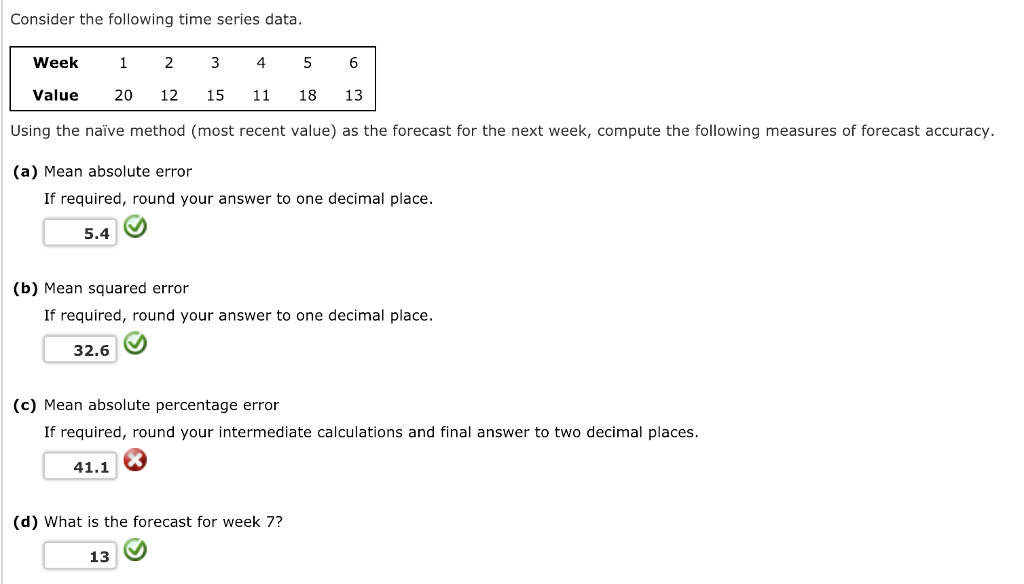Which Of The Following Is Not A Forecast Component

Imagine yourself standing on a windswept hill, the air crisp and the sky vast. You're trying to predict where the next gust of wind will come from, what its strength will be, and how long it will last. This is, in essence, what forecasters do, albeit with more sophisticated tools than just a feeling in the air.
At the heart of forecasting, regardless of the field – whether it's weather, economics, or sales – lies a set of key components. The real question is, what *doesn't* belong in that mix? This article will explore the essential building blocks of accurate forecasting and identify which elements are extraneous to the process.
The Foundation of Forecasting: Core Components
Forecasting is fundamentally about predicting the future based on available data and informed assumptions. It's not magic; it's a blend of science, art, and experience.
Data: The Raw Material
Without data, forecasting is akin to navigating without a map. It provides the historical context and current conditions necessary to make informed predictions.
This includes historical sales figures for a business, past weather patterns for meteorological forecasts, or economic indicators for financial predictions. The more comprehensive and accurate the data, the better the forecast.
Assumptions: The Guiding Principles
Assumptions are the underlying beliefs and expectations that shape a forecast. They are crucial for interpreting data and projecting trends into the future.
For instance, a weather forecast might assume that a high-pressure system will remain stable over a certain area. A business forecast might assume a certain level of economic growth.
Forecasting Method: The Tool of the Trade
Various forecasting methods exist, each with its own strengths and weaknesses. These range from simple moving averages to complex econometric models.
The choice of method depends on the type of data, the desired accuracy, and the timeframe of the forecast. Selecting the appropriate method is critical for achieving reliable results.
Evaluation and Refinement: The Continuous Improvement Loop
No forecast is perfect. Evaluation and refinement are essential for improving accuracy over time.
By comparing forecasts to actual outcomes, forecasters can identify areas for improvement and adjust their methods accordingly. This iterative process is vital for building confidence in the forecasting process.
The Outlier: Wishful Thinking
So, amidst all of these critical components, what *doesn't* belong? The answer, quite simply, is wishful thinking.
Wishful thinking involves basing forecasts on what one *hopes* will happen, rather than on a realistic assessment of the available data and credible assumptions. It injects bias and subjectivity into the process, leading to inaccurate and potentially harmful predictions.
Consider a business owner who projects overly optimistic sales figures simply because they desperately want to meet a certain target. This isn't forecasting; it's fantasizing.
The Dangers of Ignoring Reality
Basing decisions on wishful thinking can have serious consequences. Businesses might overinvest in inventory, leading to losses when sales fall short of expectations.
Governments might underestimate the impact of a policy change, leading to unintended negative outcomes. Individuals might make poor financial decisions based on unrealistic projections of future income.
Objectivity and realism are paramount.
Real-World Examples and the Importance of Grounded Predictions
The 2008 financial crisis provides a stark example of the dangers of ignoring warning signs and embracing wishful thinking. Many financial institutions continued to make optimistic forecasts about the housing market, even as evidence of its instability mounted.
This collective failure to acknowledge reality contributed to the severity of the crisis. Accurate forecasting, based on sound data and realistic assumptions, could have mitigated the damage.
In contrast, consider how meteorologists use sophisticated models and vast amounts of data to forecast weather patterns. While weather forecasting is not perfect, it is constantly improving due to the emphasis on data-driven analysis and continuous refinement.
Striking a Balance: Optimism vs. Reality
It's important to distinguish between healthy optimism and wishful thinking. Optimism can be a powerful motivator, encouraging individuals and organizations to strive for ambitious goals.
However, optimism must be tempered with a realistic understanding of the challenges and uncertainties involved. A balanced approach involves setting aspirational goals while simultaneously developing contingency plans to address potential setbacks.
The Ethical Dimension of Forecasting
Forecasting also has an ethical dimension. It is important for forecasters to be transparent about their assumptions and limitations.
They should avoid manipulating data or selectively presenting information to support a predetermined outcome. Integrity and honesty are essential for building trust and maintaining credibility.
As Nate Silver, a renowned statistician and forecaster, has emphasized, "The signal is the truth. The noise is what distracts us from the truth." This highlights the importance of focusing on objective data and rigorous analysis, rather than succumbing to wishful thinking or other forms of bias.
Conclusion: Navigating the Future with Clarity
Forecasting is a critical skill for navigating an uncertain future. By understanding the essential components of accurate forecasting – data, assumptions, methods, and evaluation – and by avoiding the trap of wishful thinking, we can make more informed decisions and achieve better outcomes.
Ultimately, the goal of forecasting is not to predict the future with absolute certainty, but rather to reduce uncertainty and increase our understanding of the possibilities that lie ahead. Embrace the power of data, cultivate a critical mindset, and strive for objectivity in your predictions. The future, after all, is not something that happens to us; it is something we create.








